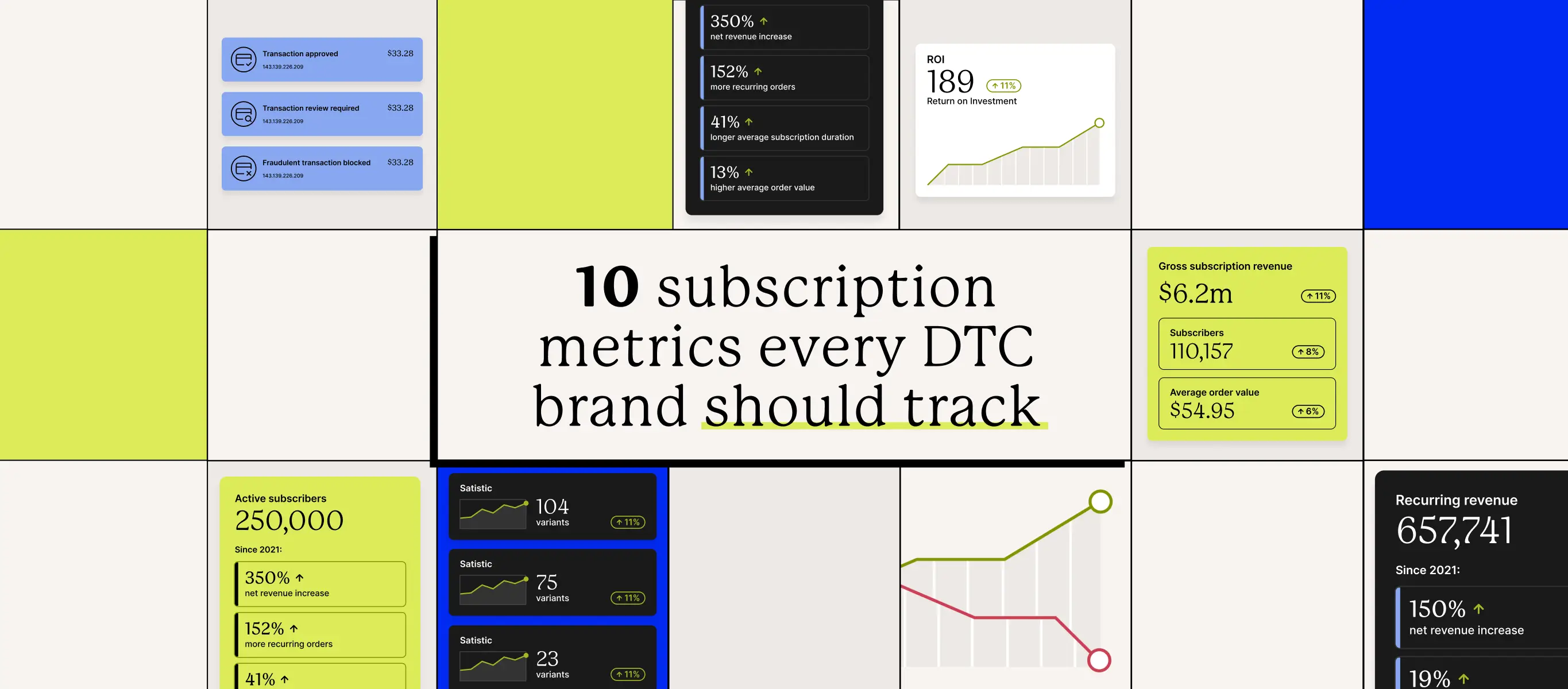It can seem daunting to scope, plan, and implement your next project, but it’s a necessary task if you want to improve your business. From a website overhaul to implementing a new component in your tech stack to marketing enhancements, it can be overwhelming to figure out what to focus on and how to start.
To better understand what you’re in for, we asked our agency and technology partners exactly what to expect, regardless of the size of your project. In this blog, we’ll cover how to determine:
- Which projects deserve your attention
- How to align on budget, scope, and timing
- The implementation process
- How to measure your project’s success
We’ve formatted this blog as a checklist—making it easy for you to reference later and apply everything you learned today to your next project.
Project planning checklist
1. Use analytics to help inform which projects deserve your attention
First and foremost, you need to understand which projects deserve your attention. There can be many—and oftentimes conflicting—areas of your business that require a tune-up. So, if you’re torn about where to put your budget and time, always look at your data to help inform your decisions.
Review data
The first step? Review your data and results from the past year. In fact, our partner Charle mentions it’s best to start by comparing quarter by quarter, and if possible, you should also compare the same periods year by year to identify any trends or areas of improvement. For example, if you’re planning on revamping your website and don’t know which pages require the most attention, compare your website’s pages quarter over quarter, then year over year, to identify trends you want to focus on.
If you’re looking for broad areas of improvement within your business, like reducing customer churn or increasing your average order value, you can also start with Recharge’s analytics. A great place to start is our Industry Benchmark report, which helps you understand how your business is performing in crucial areas, compared to others in your industry.

Create an MVT statement
Once you align on the specific project or area of improvement you want to focus on, ShipBob suggests you create an MVT statement.
MVT statement = Mission, Vision, Tenets
The mission is what you want to accomplish and why it’s important for your business. The vision is developing a real understanding of what the future will look like, and bringing your vision to life. And finally, tenets are your core values, and how you incorporate them into your project.
2. Align on budget & timing
Next up, you need to align your budget and timing, both internally and with your potential agency and/or technology partner.

Budget
When determining your budget it’s important to be flexible, but you should always set a hard limit you will not go over. That said, SeaMonster notes you should always factor in a 10-30% additional budget to handle the unforeseen scope and in-project discoveries. For example, if you want to execute a $100,000 website redesign, you should allocate $110-130,000 to ensure your project budget has the flexibility it needs to change directions if needed.
Timing
You should determine the date you need your project “in hand,” and then craft a work-back plan. Remember, you should always allow for more time than initially anticipated, especially if you’re working against a hard deadline.
For an example of what a website redesign timeline could look like, SEEDCMS suggests 6-12 months out for a bigger project (i.e. complete website redesign) and 2-3 months out for a smaller project (i.e. minor optimizations to a website page). It’s best to plan any smaller projects on a quarterly basis, with weekly and monthly check-ins to confirm that the plan is still relevant. A healthy mix of reactive and proactive changes/improvements will keep the site running smoothly and drive continued growth.
If you’re updating or building out a tech stack, it’s best for merchants to have a roadmap of features they need that spans at least a year. If you’re not already planning out a rough feature list, start!
3. Determine the scope of your project
Once you develop the budget and timing for your project, you should determine who will support your project both internally and externally, as well as who will support the project through implementation and any stages post-launch.
A RASCI chart is a great project management tool to help you delegate tasks and authority to the appropriate people. RASCI stands for responsible, accountable, supporting, consulted, and informed.
Internal support
Don’t be caught off guard by the internal resources you will need to support your project launch. This can range from design guidance and asset provision to content entry and product catalog alterations required to make a feature work. You should plan accordingly to ensure you have proper internal delegation every step of the way.
Brands should form an internal team dedicated to project dependencies to keep the project moving forward, ensure stakeholder buy-in across the organization, and account for change management activities to enable all parties to operate successfully upon completion.
–Gorilla Group
Agency support
When doing research for external agency support, referrals are a great place to start. Here at Recharge, we are happy to help refer you to one of our trusted agency partners to help you complete a project.
Prepare your request for proposal
The more information you can provide about your business, project goals, and overall vision, the better. The request for proposal (RFP) process also acts as a great opportunity to ask your potential solution partner to share their expertise and offer ideas you haven’t considered yet.
Great RFPs, according to ShipBob, have a strong mix of clear wants and needs, but also lots of exploratory questions. When creating an RFP, think of what you don’t know, and keep some questions open-ended, such as, “What haven’t I asked that you’d typically tell a brand like mine?”
Once you select the agency for your project, Tidal notes that it’s crucial to ensure your expectations are clear upfront, and to always get your agreements in writing!
4. Set project goals & KPIs
Once you’ve selected your agency of choice, it’s time to set your project goals and key performance indicators (KPIs).
According to Gorilla Group, before the first line of code is written or any design created, the project team should define a robust set of KPIs that will be used to measure the project’s success. These include quantitative metrics such as return on investment (ROI), changes in user behavior like conversion rate and average order value (AOV), plus qualitative KPIs that measure improvements in quality and efficiency within the organization. The more granular the KPIs, the deeper project success can be measured.
Subscriber growth, overall revenue, conversion, and click-through rates are all great KPIs to measure for your subscription business.
–Attentive
As a reminder, it’s important to take baseline measurements. For example, SeaMonster notes if the goal of a project is to increase conversions by 2%, then it’s important to understand the current baseline of conversion and to set goals based on that.

5. The implementation process
After your project has kicked off, ensure you work closely with your agency to develop key communication points and timelines to adhere to. According to Avex, project launch dates are most often postponed due to a delay during the feedback process, so prioritizing internal reviews is a great way to keep on schedule.
6. Test, optimize, & improve: Continuously measure against your KPIs
When the project is complete, your work isn’t done! After implementation, it’s crucial to continue to test and optimize all aspects of your business to ensure you’re giving your customers the best possible experience.
Clients can often think too much about an initial launch, and not enough about long-term plans to test, optimize, and improve. You need to build for change.
–Klaviyo
As Charle notes, you should view projects as a future-proofing exercise that will provide improvements to business-driving metrics, such as conversion rate, bounce rate, AOV, and more. So, whether you decide to do it yourself or connect with our agencies for help, give yourself a pat on the back for taking a large step toward growing your subscription business.
Plan your next project with confidence
Equipped with our project planning checklist, you’ll be able to confidently tackle all your projects in 2023 and the years to come. Use data to inform your decisions, set accurate and achievable goals, and watch as your campaigns find success out in the world.



